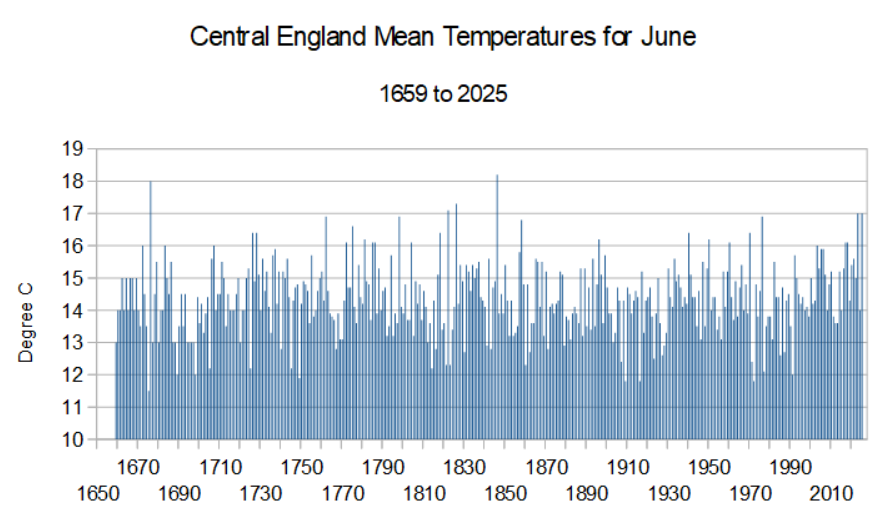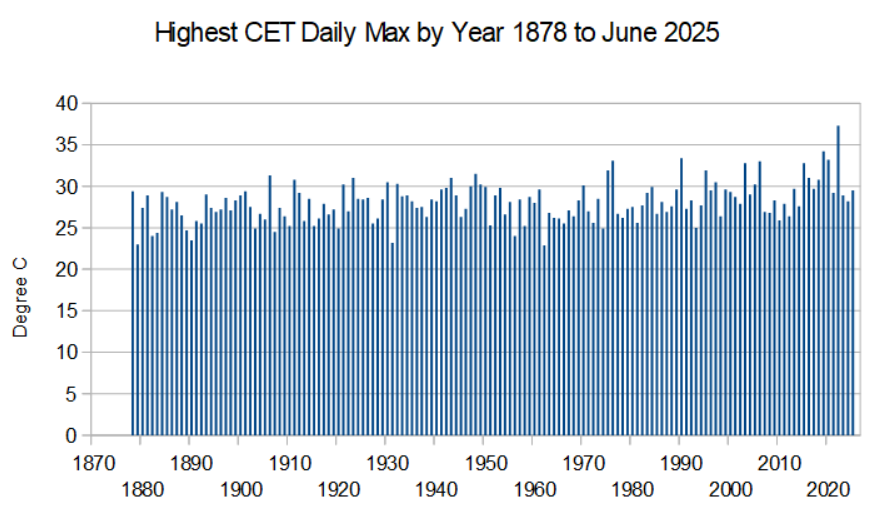WE ALL get fed up with the BBC’s blatant bias and lies about climate change amongst many other topics. But I was truly sickened by their coverage of the tragic floods in Texas a week ago, which have left at least 111 dead. Their report declared:
‘The influence of climate change cannot be ignored as another factor in extreme weather events like this. Whilst it is difficult to directly attribute the influence of the warming planet to one particular weather event, sea surface temperatures in the Gulf of Mexico, where some of the air originated from, continue to be warmer than normal. Warmer waters mean more evaporation and so more available moisture in the atmosphere to feed a storm.’
To use human tragedy to promote a political agenda in this way is utterly inexcusable, even if the claim happened to be true. There will plenty of time later to investigate these matters.
But as is always the case when the BBC make these claims, they provide no data to back them up. If things really were as simple as they make out, the data would be indisputable, but it is not.
The Guadeloupe River water level reached a crest of 29.5 ft in last week’s flood, but in a similar flood there in 1987 the river rose to 37 ft. Ironically that flood killed ten children at another summer camp. Rainfall totals in that 1987 flood also exceeded last week’s.
That little part of Texas has always been severely affected by flash floods, so much so that it has long been called ‘Flash Flood Alley’. It is recognised as the area most at risk in the whole of the US.
As Professor Roger Pielke Jr, the leading US expert on weather disasters, writes: ‘The flooding was certainly extreme but it should not have been historically unexpected. The documented record of extreme flooding in ‘flash flood alley’ goes back several centuries, with paleoclimatology records extending that record thousands of years into the past.
In 1846, Texas experienced one of the greatest losses of life in US history related to extreme weather. In the months after Texas became a US state, massive flooding compounded the many problems facing thousands of recent immigrants from Germany who had been settled in New Braunfels, Texas, which was significantly impacted by this week’s floods.’
Pielke goes on to present the actual data, which proves conclusively that, if anything, extreme rainfall has declined in the last 50 years in that part of Texas. He concludes: ‘Based on the peer-reviewed literature and observational records, there is little empirical basis to claim that extreme precipitation has increased in ‘flash flood alley’ (or indeed, most of North America or the world). Similarly, there is little basis for claims that flooding has become more common or severe.
‘This tragedy occurred in a location that has among the greatest risks in the nation of flash flooding, where kids in summer camps have previously been swept away to their deaths, and where warning systems are (apparently and incredibly) not in place. This tragedy never should have happened and it should never happen again.’
The Met Office are at it again
THE MET Office have claimed that last month was the hottest June in England since records began in 1884. Well, they would, wouldn’t they!
What they did not tell us was that they have other records going back much further which show conclusively that the country has been hotter in the past. The Central England Temperature series, which dates back to 1659, confirms that the warmest June occurred in 1846. The Junes in 1676, 1822 and 1826 were also hotter, which rather destroys the Met Office’s argument that climate change is to blame for the warm month we have just had.

https://www.metoffice.gov.uk/hadobs/hadcet/data/download.html
The Met Office’s claim that it knows the average temperature in the UK to a hundredth of a degree is nonsense anyway. Its temperature dataset is not fit for purpose as it is largely full of weather stations which are so poorly sited that recorded temperatures may be overstated by as much as 5C. Altogether 78 per cent of their station network are officially classified as junk Class 4 and 5 sites, based on World Meteorological Organisation (WMO) guidelines.
Another 9 per cent are officially near-junk status Class 3 sites, accurate only to 1C. We are familiar with many of the siting issues – next to roads and airport runways, close to hedges, in walled gardens (specifically built to keep cold air out!) and near to car parks and buildings.
The Met Office know full well that they should not be using any of these sites for climatological purposes; the WMO rules specifically state that. But they do anyway.
With so much poor siting, the Met Office have no way of knowing UK temperatures even to an accuracy of one degree, let alone one hundredth.
It is not just a matter of countrywide averages. The Met Office regularly uses the worst sites to advertise temperature highs on a daily basis. For instance, the highest temperature recorded last month, they say, was 33.2C at Charlwood, a junk site which just so happens to be a mile downwind of Gatwick Airport!
According to the Met Office’s report for June, ‘30°C was reached and exceeded on several occasions in parts of central, southern and eastern England’ – but how many of these measurements were artificially raised by siting issues?
It is these same temperatures that are used to push propaganda about ‘heatwaves’, when for most it is just pleasant sunny weather.
Perhaps the most telling graph shows the highest daily temperature recorded each year. So far this year it has reached 29.5C, a level often seen in the past. Apart from that one truly exceptional day three years ago, there does not appear to be anything to be alarmed about:

https://www.metoffice.gov.uk/hadobs/hadcet/data/maxtemp_daily_totals.txt








